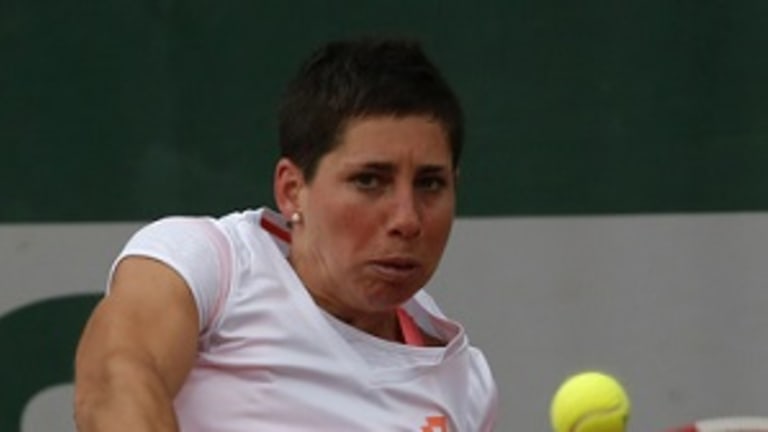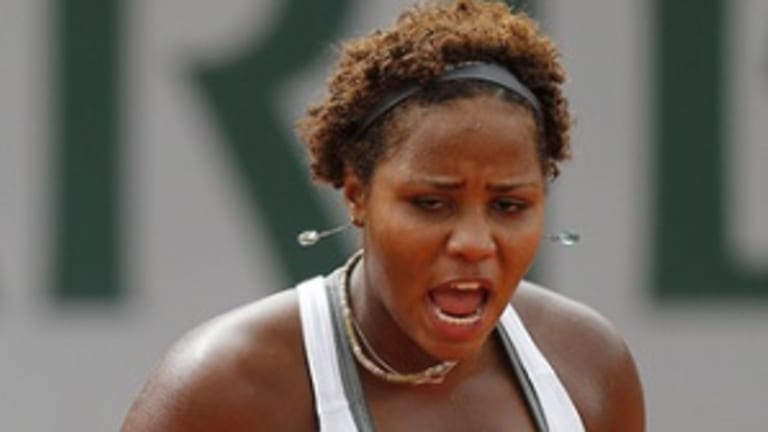Paris—Taylor Townsend knew that Zina Garrison, her co-coach (with Kamau Murray), sliced and diced her way to the quarterfinals in her first appearance here at Roland Garros. She was the same age in 1982 as Townsend is now (18). So it was only natural that Garrison’s protégée tormented her earlier this week with only half-serious threats to better that performance.
“I’d cut her off when she started to go there,” Garrison said today. “I just said. ‘Oh, you’ve got a long way to go.’”
Today, Townsend learned just how far. Townsend, a French Open wild card, was beaten in the third round in barely over an hour by No. 14 seed — and clay-court wizard — Carla Suarez Navarro, 6-2. 6-2. That she found time to make 33 unforced errors (nearly five times as many as Suarez Navarro) in so brief a sojourn in the Bullring (Court One) tells much, but certainly not all.
“She was a little too relaxed for us this morning,” Garrison said after the match was over. “She was like, ‘Oh, I feel good,’ and I was like, ‘I need you to feel a little more pressure.’ But you never know how these big moments will affect you.”
Townsend found out soon enough. The happy-go-lucky teenager with the halogen smile dug herself into a big hole by, as Garrison put it, “going for too much, too soon.” Her performance was something like a parody of the way she plays — a distortion of the same qualities that enabled her to rebound from a 1-5 deficit and reel off nine straight games in her first-round win over Vania King, or to overcome the belle of Nice, No. 20 seed Alize Cornet (and her legions of besotted fans). But the arm that swatted balls so freely in those matches locked up today.
“I was nervous, yeah.” Townsend said. “Just everything has been so new for me over the past couple of days. But I still was trying to really slow down and continue to work on the same things that I have been doing in practice and in the past couple of matches. I was just trying to focus in on that, but there were a lot of other things that were going through my head. I was just trying to keep calm.”

